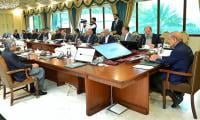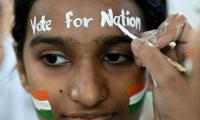Narendra Modi abrogated article 370 and 35A in respect of the Indian-held state of Jammu and Kashmir. Article 35A of the Indian Constitution was an article that empowered the Jammu and Kashmir state’s legislature to define “permanent residents” of the state and provide special rights and privileges to those permanent residents. It was added to the Constitution through a Presidential Order — The Constitution (Application to Jammu and Kashmir) Order, 1954 – issued by the President of India on May 14, 1954 under Article 370. The state of Jammu and Kashmir defined these privileges to include the ability to purchase land and unmovable property, ability to vote and contest elections, seeking government employment and availing other state benefits such as higher education and healthcare. Non-permanent residents of the state, even if they were Indian citizens, were not entitled to these ‘privileges’.
While this unconstitutional measure against the spirit of democracy had a burning effect throughout Kashmir, it also gave an alarming call to other princely states acceding to India at the time of the partition.
This Article explains the Constitutional evolution of the state of Jammu and Kashmir and its relationship with the Union of India from 1946 to 2010. The crux of this Article is based on the restoration of the State autonomy that the governmental authorities who abrogated the Article had no vision that it is irrevocable and against the spirit of so-called accession of the state with the dominion of India. This Article was the outcome of five-month deliberations between Prime Minister Jawaharlal Nehru and Sheikh Abdullah. A joint solemn affirmation was given to this Article “Neither side can amend or abrogate it unilaterally except in accordance to the terms of the provision” (2/3rd majority of the Parliament). The Union Home Minister P. Chidampuran acknowledged in the Rajya Sabha on August 6, 2010 that Jammu and Kashmir accession to India is done in unique Circumstances. It is important to win the hearts and minds of the people of Jammu and Kashmir which cause for the resolution of real dispute through right of self-determinations.
Even the instrument of accession of the State of Jammu Kashmir signed by Maharaja Hari Singh on October 26, 1947 was accepted by the then Governor General Lord Mountbatten subject to the condition that the final accession of state of Jammu and Kashmir shall be decided by the people of that state. He stated that ‘in case of any State where the issue of accession has been the subject of dispute, the question if accession should be decided in accordance with the wishes of the people of the State, adding it was his Government’s wish that as soon as law and order is restored in Kashmir and her soil cleared of the invader the question of the State’s accession should be settled by a reference to the people. Meanwhile in response to your Highness’ appeal for military aid, action has been taken today to send troops of the Indian Army to Kashmir to help your own forces to defend your territory and to protect the lives, property and honour of your people.’
The reply of Lord Mountbatten has made the accession conditional that it was made subject to the wishes of the people of Kashmir through a right of self-determination. In this way it carries a great impact and doubt upon Kashmir accession to India.
In view of the Indian Act of 1935, the majority of the people living in the state could decide the accession either to the newly state of Pakistan or India.
At the time of Partition, the viceroy Lord Mountbatten set up the guideline that geographical contiguity, communal interest will be the paramount consideration of accession. The State of Junagadh was a princely state in Gujarat ruled by the Muslim Babi or Babai dynasty in British India, until its occupation by the Indian Union in 1948.
In 1947, upon the independence and partition of India, the last Babi dynasty ruler of the state, Muhammad Mahabat Khanji III, decided to merge Junagadh with Pakistan. However, the Hindu citizens, who formed the majority of the population, revolted, leading to several events and also a plebiscite, resulting in the integration of Junagadh into India.
In Hyderabad case, the ruler was Muslim and 85% of the population was Hindu. The Nizam wanted to become either independent or join Pakistan. Though Lord Mountbatten firmly advised him not to undertake any of those courses, Nizam refused. In the face of the growing threats by the Indian government on August 24, the government of Hyderabad sought urgent attention of the UN Security Council, but before Hyderabad appeal could be taken up, Indian forces occupied the state under the pretext of the danger of communal disorder. Similarly, the state of Jodhpur whose ruler wanted to join Pakistan, again upon the intervention of Lord Mountbatten, Maharaja of Jodhpur acquiesced into acceding to India. Similarly, the predominantly Muslim province of Bengal and Punjab wanted to accede to Pakistan but this was not done and they were divided on the basis of partition principle.
It is so ridiculous that the state of Jammu and Kashmir had the Muslim Majority but rulers was Hindu how the instrument of accession was conditionally accepted by the then Governor General Lord Mountbatten.
Prime Minister Jawaharlal Nehru was the co-framer of the enactment of Article 370. He declared in the Lok Sabha ‘we do not want to take the initiative and completely put end to Article 370. The Union Home Minister Gulzarilal Nanda view was that the only way of taking the Constitution of India in Jammu and Kashmir is through the application of Article 370… It is a tunnel where a good deal of traffic has already passed and more will.’
Nanda concluded: ‘What happens is that only the shell is there. Article 370, whether you keep it or not, has been completely emptied of its contents. Nothing has been left in it’.
In fact, the Indian independence empowered the Governor General to adopt the government of Indian Act 1935 as interim Constitution until the Constituent Assembly of India enacted the Constitution. Every state accepted Part-B of Constitution of India providing uniformity for the governance of former state of Jammu and Kashmir was the only exception. They wanted their own Constitution drafted by their own Constituent Assembly and that was the reason for the negotiation of Article 370 to protect those rights. Parliament power over the state was restricted to three subject i.e. defence, foreign affair and communication. The president could extend other provision of the Constitution in respective state to provide federal constitutional framework. Constitutional provision and other union power was extended to Kashmir.
The prior concurrence of state government was required. This concurrence was strictly provisional, it had to be ratified by the state constituent assembly. Article 370 (2) clearly says: “If concurrence of the Government of the State… be given before the Constituent Assembly for the purpose of framing the Constitution of the State is convened, it shall be placed before such Assembly for such decision as it may take thereon”. The state government authority to give the concurrence (last only till the state constituent assembly convened).
The final feature of Article 370 (3) empowered the president to make an order abrogating or amending it but for this also “the recommendation of state Constituent Assembly shall be necessary before the president issues such a notification”.
The difference of abrogation or amendment in the provision of the Constitution is entirely different when we read Article 370, it cannot be abrogated or amended by way of amending provision of Constitution of India which is applied in all the other states under Article 368. In Jammu and Kashmir no Constitutional amendment ‘shall have effect in relation to the State of Jammu and Kashmir’ because for the reason that it required the concurrence of the state governments and ratification by its Constituent Assembly.
Article 370(1)(b) is clear:
1. The power of Parliament to make laws for the said State shall be limited to’matters in the Union and Concurrent Lists corresponding to the broad heads specified in the Instrument of Accession.
2. Concurrence was required when the provisions regarding the union institutions were beyond the agreed one. Article 370(2) shows that framer of the Constitution make every provision subject to the final decision of Constitutional Assembly.
The same principle is endorsed by the Supreme Court of India having decided in Prem Nath Kaul vs J&K in 1959 that article 370(2) shows the constitution maker attached great importance to the final decision of constitutional assembly and the President can make no order under Article 370. If he does so it is an abuse of article 370.
Modi’s action shows lack of vision and reflects that he is ignorant of the aftereffects of unconstitutional, undemocratic effects of abrogation of Article 370 and 35A of the Constitution.
Kashmir has now become the most dangerous place in the world between two nuclear states. The world has to realize that there are deep gulfs in Jammu and Kashmir valley.
If the people of Kashmir wants total merge in Pakistan, they have the right to do so. And if they want an independent state they have the right to have their own Constituent Assembly. A lot of water has flowed under the bridge and the facts are now beyond New Delhi’s control. In fact a rational decision is needed by the world for the solution of Kashmir dispute.
President called the Senate meeting under Article 54 of the Constitution
Crowd’s long wait due to persistent rain backed by heavy showers came to an end just for two deliveries with New...
Chief Justice Justice Faez Isa said amendments to the High Court Rules were necessary before appointment of judges
A division bench of the PHC comprising Justice SM Attique Shah and Justice Syed Arshad Ali heard the petition in which...
According to the Senate Secretariat, Gilani emphasized better coordination between the two Houses







